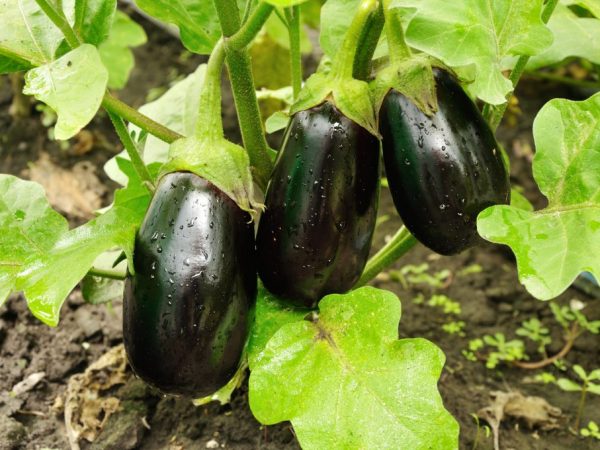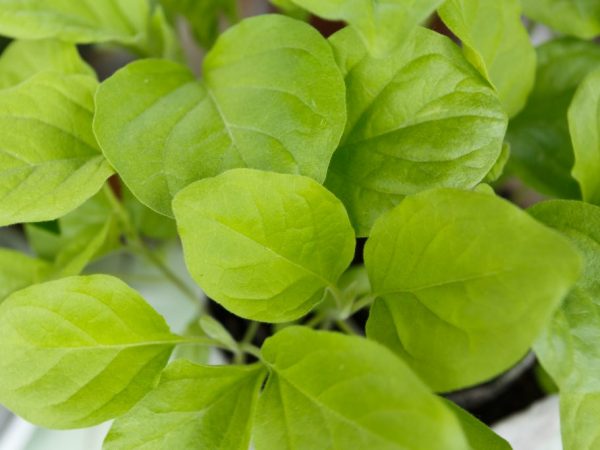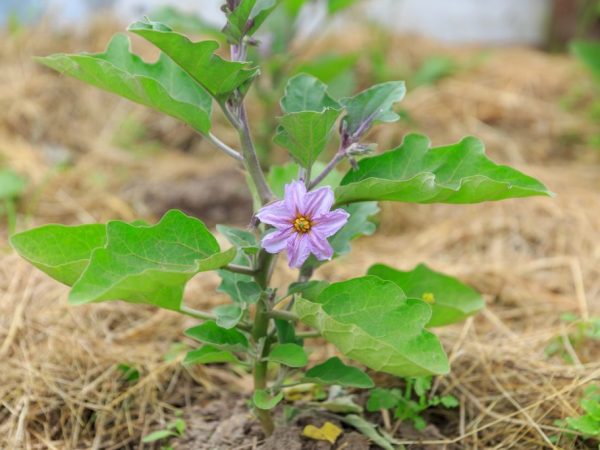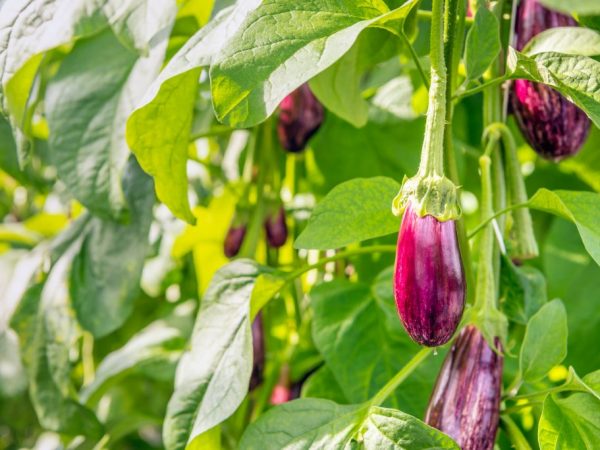Eggplant growing rules
You need to grow eggplants according to certain rules. Plants love warmth and do not tolerate frost. At temperatures below 20 ° C, their growth stops, pollination does not occur. Lack of moisture threatens to fall off buds and flowers. Blue ones prefer a bright 12-hour daylight hours.

Eggplant growing rules
Growing seedlings
Eggplants are best cultivated in seedlings. For regions with a short summer, early varieties are chosen, the fruits of which will have time to ripen by the end of the season.
Seed preparation
For sowing, use the material of the last year. The preparation process includes several stages:
- Pickling - the grains are soaked in a 1% solution of potassium permanganate for 20 minutes. Then they are removed and washed with clean water, dried.
- Warming up - at a temperature of 25-30˚С for 4 hours, at 50˚С - 40 minutes.
- Saturation with useful substances - organic means are used for stimulation: aloe, mummy. On their basis, a solution is prepared, the seed is soaked. For this purpose, wood ash is also used (a matchbox for 1 liter of water, insist for a day, strain).
- Germination - the grains are placed on gauze folded in several layers, covered in the same way, moistened. Placed on an environment with a temperature of 25 ° C. Germination period is 2-3 days.
Water is used thawed, rain or magnetized.
Sowing dates
The time for planting seeds is determined based on the age of the seedlings for planting. Approximate age 60-70 days. Seedlings are planted in open ground somewhere around June 10, so sowing is planned for the end of March.
Some gardeners prefer to plant their seeds earlier. Early ripening varieties - in early March, late ripening - at the end of February. The sprouts are planted at the age of 80-90 days, when flowers and even ovaries appear on them. Then the transplant is performed so as not to disturb the earthen lump. Observing the sowing time, they accelerate the period of fruiting and harvesting.
Soil preparation
The soil should be:
- loose;
- breathable;
- fertile.
A mixture of turf, humus and sand (5: 3: 1) will possess such qualities.
Mineral fertilizers are added to the bucket of the substrate: 40 g of superphosphate, 20-30 g of potassium salt and 10 g of ammonium nitrate. Instead of potassium salt, add another 40-60 g of ash. To prevent a disease such as black leg, the ground is watered with a dark solution of potassium permanganate or boiling water.
Sowing
It is desirable that each plant be in a separate container, since the culture does not tolerate picking and transplanting well. Deepening for seeds - 1 cm. Sprinkle them with earth on top, tamp them slightly, water them. Cover the vessel with a transparent film. The optimum temperature for germination is 25 ° C, so the containers are placed on a warm windowsill or near a battery. On average, it takes 1-2 weeks before germination.
Seedling care
Temperature

Take good care of your seedlings
The technology for growing eggplant seedlings provides them with optimal conditions. When shoots appear, the temperature in the room is lowered to 16-17 ° C during the day and 12 ° C at night. It is better to grow in the apartment on the balcony.
If the roots are developed, the seedlings will not elongate. After a week, the plants are returned to Wednesday with a daytime temperature of 25˚C, a nighttime temperature of 14-15˚C. A few days before disembarkation, eggplants are tempered by taking them outside or opening a window.
Lighting
The sprouts require good lighting. Since the weather is still cloudy in early spring, the plants are illuminated with phyto-lamps or daytime lamps. They are installed at a distance of 50 cm from the plants. After the appearance of the first true leaves, poor-quality seedlings are discarded. In the future, she will not give a good harvest anyway.
Watering
Watering is done about once a week. The amount of water applied should be moderate. Do not allow the soil to dry out. And excess moisture threatens the development of fungal diseases.
Subcoma
Seedlings are fed at the age of 7-10 days, if picking is not provided. Otherwise, fertilizers are applied in the same number of days after the procedure. Repeat feeding after 2 weeks. Nutrients are provided through the following means:
- ash solution - 1 tbsp. for 10 liters of water;
- complex mineral fertilizers (if the seedlings grow slowly) - according to the attached instructions.
Disease prevention
Seedling care includes prevention of disease development. For this purpose, the bushes are watered with a 1% solution of potassium permanganate. If the seedlings are already sick, the affected plants are removed. The rest should be treated with Energodar (3 ml per 1 liter of water). The agent is applied at the root, watering is repeated after 7-10 days.
After the development of 5 leaves, the growth point is pinched. The plant then stops growing but forms lateral buds. This technique makes seedlings healthy, promotes their survival in the open field. The size of the seedlings is reduced, becoming more convenient for transportation.
Picking
Transfer is performed in phase 1 of this sheet. The plants are carefully removed along with the earthy clod so as not to damage their root system. When planting, they are buried to the cotyledons. If the dive is not made, then the earth is periodically poured in until a real leaf is formed.
Landing in open ground
If the seedlings have reached 10 cm in height and have formed 5-7 true leaves, they can be planted. Landing is done when warm weather sets in and the threat of frost has passed. If the seedlings are planted not in open ground, but in a greenhouse, then the approximate dates for planting are the second half of May.
Predecessors

Plants need sunlight
Growing eggplants should be done in a sunny, elevated location. The best predecessors for them are:
- carrot;
- cucumbers;
- bow;
- garlic;
- cabbage;
- melons and legumes.
After nightshades, planting is not made for 2 years.
Landing rules
The garden bed is prepared in the fall. The land should be fertile and loose. It is also saturated with 2 types of nutrients:
- organic products - for 1 m² they give 2 buckets of humus (compost) and 1 liter of ash;
- mineral fertilizers - 40-50 g of superphosphate and 20-30 g of ammonium nitrate or 60-70 g of nitrophosphate are applied per 1 m².
The day before planting, and then immediately and in front of it, the seedlings are watered abundantly. Plants are removed along with a clod of earth. If the selected variety is undersized, then the seedlings are planted at a distance of 40-45 cm with an interval between rows of 60 cm. Tall species should be grown according to the scheme 50-60 * 60 cm. They pre-dig holes and add water to them so that the earth becomes mud-like. Eggplant roots are deepened by 2 cm. 2 plants are placed in each hole. The soil is slightly compacted. A layer of dry earth or peat mulch is poured around.
If frosts are predicted, eggplants are covered with plastic wrap or agrofibre, pulling them on arcs. They are periodically raised for ventilation.The defense is removed when the threat has passed.
To get a good harvest, some gardeners grow vegetables in the country in 12 liter buckets. For this, many holes are drilled in the bottom and on the walls (5-10 cm in height). Then lay in layers:
- manure;
- ash;
- double superphosphate;
- garden land.
The buckets are filled up to half their volume. The soil is filled up as the bushes grow.
Adult plant care
To grow eggplants, you should follow the rules of agricultural technology. Secrets of proper care:
The seedlings do not grow for the first two weeks, as a powerful root system is being formed. At this time, the plants are not watered, they have enough introduced water when planting. After this period, the soil is often moistened. Water for irrigation is used warm, settled.
The soil around the eggplants is loosened at least 5 times per season. This manipulation promotes oxygen access to the roots. It is especially shown after torrential rains that compact the earth. Weeds are also regularly removed so that they do not take on some of the nutrients.
Top dressing

Eggplants do not need pinching
When growing eggplants, fertilizing is used in 3 stages:
- 10 days after planting, the following fertilizer is used: 15 g of ammonium nitrate, 20 g of superphosphate, 10 g of potassium sulfate, 10 l of water. Consumption - 1 liter of solution per 1 bush.
- During the period of mass flowering, an ash infusion is used (2 glasses per 10 liters of water, leave for a day). Introduce by foliar method.
- At the beginning of fruiting, an infusion of mullein (3-4 kg per 10 l of water) or bird droppings (0.5 kg per 10 l of water) is added. The concentrate is diluted with water in a ratio of 1:10.
Eggplants should be hilled if they are not mulched and planted according to standard recommendations. For this, earth is poured around the central stem. This promotes the formation of additional roots, which increases the nutrition of the culture. Eggplants do not need to form bushes. It is worth trimming only the side shoots and leaves that shade the buds.
Harvesting
About a month after flowering, the fruits ripen. At this time, they acquire a color characteristic of eggplants, the surface becomes glossy.
Cut vegetables with a garden pruner or cut with a knife along with the stalk. Do not break them, this can damage the plants. If not harvested on time, eggplants become tasteless. Bushes spend a lot of energy on them, so they do not form young fruits. Cutting prematurely will also not please - the taste will be bitter.
The consequences of improper care
Growing eggplants has its own characteristics.
Signs of improper care:
- Vegetables do not acquire a purple hue, the leaves lighten or turn brown. The reason is thickened plantings, lack of sunlight.
- Cracking of fruits - occurs with uneven watering in combination with high temperatures.
- Eggplants shed flowers and ovaries - the problem manifests itself when cold water is applied, when the soil dries out, when nitrogen-containing substances are used immediately after planting seedlings in open ground.
- Folded leaves, the formation of a brown border at the edge are the consequences of a lack of potassium. If they are placed to the stem under the sharp cut, then this is the result of phosphorus starvation. When the leaves brighten, the plants lack nitrogen.
- Eggplants bloom, but do not bear fruit - a violation of the temperature regime, excess nitrogen or pollen, unsuitable soil.
Diseases - pests
The culture is often affected by viral and fungal diseases:
- Mosaic - to prevent pre-sowing treatment of seeds. When a disease is detected, damaged plants are removed and burned, sprayed with insecticides.
- Stolbur - seeds are subject to heat treatment, destroy weeds, plantings are sprayed with Aktelik.
- Gray rot - the affected areas are removed, fungicides are used.
- Late blight - supporters of natural farming use garlic infusion, serum solution.But such drugs are more effective: Bordeaux mixture, Quadris, Antracol.
Eggplants can lose their healthy appearance due to the invasion of such pests:
- Aphids - Karbofos is used to fight. Also sprayed with infusion of ash.
- Slugs - loosening the earth helps against them, followed by pollination with ground black pepper or mustard.
- Spider mite - fight with Strela.
- Colorado potato beetle - harvested by hand.
Conclusion
Eggplant is a demanding crop. Taking care of her is not difficult if you consider all the tips. Growing healthy seedlings is important. She will give rise to a high harvest in the future.
Particular attention is paid to temperature, as the plants are thermophilic. Growing will be effective even in the northern regions, if you correctly protect them from the cold.


